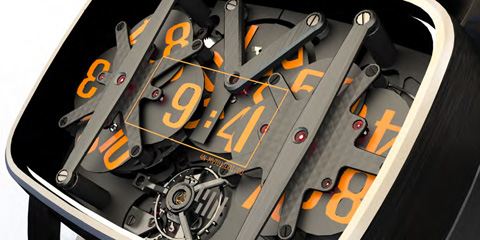
2015 Harley-Davidson Street Glide rendered in Iray for Rhino. Production data courtesy of Harley-Davidson Motor Company
Nvidia is ramping up its efforts in the design viz sector with the launch of DesignWorks – a new suite of tools and technologies designed to help CAD software developers integrate a variety of physically-based rendering (PBR) and visualisation technologies.
DesignWorks includes more than 20 viz-focused tools that cover rendering, materials, displays and VR but the key focus is on three components – the Nvidia Iray software development kit (SDK), Nvidia Material Definition Language (MDL) and Nvidia vMaterials.
Nvidia Iray is a physically-based rendering technology optimized to run on Nvidia CUDA GPUs. It is found inside a number of CAD tools including Catia, SolidWorks Industrial Designer and Siemens NX.
While the technology has been around for years, Nvidia has only recently given it renewed attention. Back in March it announced a big push to develop Iray plug-ins for a whole range of popular CAD and viz tools, including Rhino, 3ds Max and Revit.
With the new Iray SDK Nvidia hopes to make it easy for other CAD developers, both large and small, to adopt Iray – using the same development tools that Nvidia has at its disposal. Nvidia said either itself or its partner Lightwork Design would be on hand to help developers.
While extending the reach of Iray is a fundamental part of DesignWorks (as it directly helps Nvidia sell more powerful GPUs to carry out the complex ray trace calculations) Nvidia acknowledges that it also needs to work more closely with the many established rendering technologies out there to benefit Iray from a workflow perspective
To this end it has developed the Material Definition Language (MDL), which it hopes will become an industry standard way to describe physically based materials. It will soon release an MDL SDK to help CAD and rendering software developers to adopt it.
With MDL materials the idea is that designers can move models between supporting applications and create consistent visualisations, without having to re-apply materials and lights.


Nvidia has created 200 vMaterials which can be used in any MDL-compatible rendering tool.
Both Iray and mental ray already support MDL. Notably, Chaos Group has also come on board, announcing MDL support for V-Ray at Siggraph this week.
Nvidia is also developing a collection of ‘calibrated and verified’ materials for use in MDL-based applications. The company said it will soon release 200 Nvidia vMaterials, with more to come later.
Elsewhere, DesignWorks includes a whole range of ‘display’ focused development tools for multiple displays (large display walls), virtualized graphics (GRID SDK) and virtual reality.
An extension of the GameWorks VR toolkit, the Nvidia DesignWorks VR toolkit is designed to help CAD software developers create optimal professional VR environments.


VR in Autodesk VRED
Performance is a key challenge for VR, which is important in order to deliver a realistic experience. One way to boost frame rates is to throw more GPU power at the problem – and here Nvidia includes support for VR SLI where multiple GPUs can be assigned a specific eye to accelerate stereo rendering.
However, the toolkit also includes a shading mode that can increase 3D performance by rendering images that appear in the user’s peripheral vision at a lower resolution.
Other DesignWorks tools include combining real time graphics with real time video at low latencies and a video codec SDK that could help send CAD models out to other devices, such as tablets.

ESI – artificial crash scene symbolizing the evolution from CAD coloured models towards realistic visualization of engineering (not design/styling) content.
Meanwhile, Nvidia has also released two new Quadro GPUs based on the Maxwell architecture, which should be well matched to GPU rendering. Read more about the mid-range Quadro M4000 and high-end Quadro M5000.

Nvidia Quadro M4000 with 8GB memory






